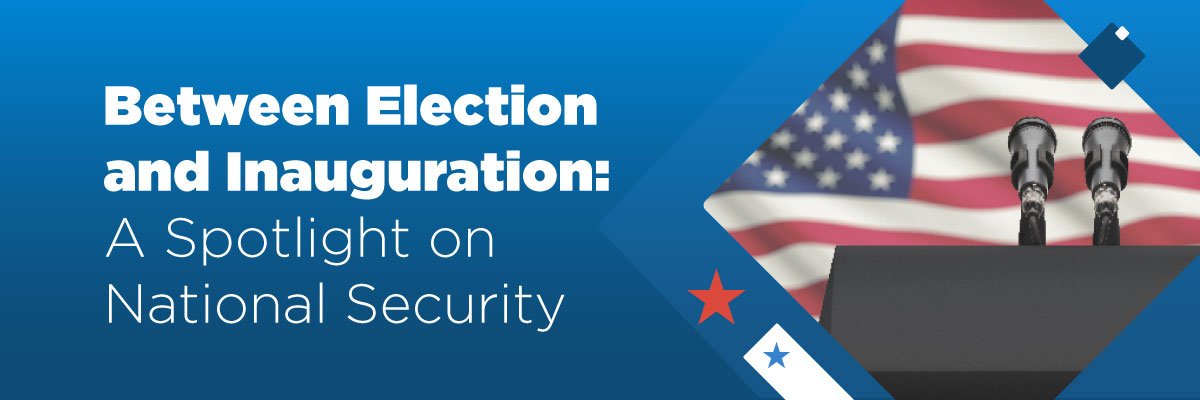Blog
November 23, 2020
The Presidential Transition: Sharing Information on National Security Issues
By Alex Tippett
One of the most important components of the transition from one president to the next is the sharing of national security information. New administrations need to be aware of the threats facing the country and what option they have at their disposal.
Each of the last three administrations took substantive steps to ensure their successors were fully prepared. Much of this work was done by career officials in various Cabinet agencies and in the intelligence community, but in recent years outgoing White House officials and national security staff have participated.
In general, an outgoing White House prepares memos and hosts in-person briefings for their replacements. Both the George W. Bush – Barack Obama and the Obama-Donald Trump transitions included preparedness exercises to simulate real-world national security scenarios. With the passage of the Edward ‘Ted’ Kaufman and Michael Leavitt Presidential Transitions Improvements Act of 2015, such exercises are now required.
The following are examples of how the last three presidents prepared their successors.
2000-2001: Clinton-Bush Transition
According to George W. Bush’s National Security Advisor Stephen Hadley, President Bill Clinton’s administration relied primarily on written memos and several in-person briefings. The Clinton team held briefings conducted by National Security Council staff along with a limited number of principal-to-principal briefings with senior Bush officials on threats posed by al-Qaeda and the North Korean missile program.
2008-2009: Bush-Obama Transition
The outgoing Bush administration put a heavier emphasis on principal-to-principal briefings. These included meetings attended by both the incoming and outgoing secretaries of State, national security advisors and White House counsels.On the Monday following the 2008 election, Bush personally briefed President-elect Obama on ongoing covert operations.
The Bush team also relied heavily on mid-level staff. They prepared about 40 memos on specific national security concerns beginning eight months prior to the election. Meetings with members of the Obama security team began after Thanksgiving.
The Bush administration also left contingency plans for a variety of possible scenarios, and organized two tabletop exercises where outgoing members of their national security team paired up with their incoming counterparts. Roughly 50 senior officials attended. The first was held in December and focused primarily on the NSC and best practices for foreign policy decision-making. The second, conducted on Jan. 13, simulated the response to a terror attack.
On Inauguration Day, the two teams met in the Situation Room to discuss an immediate terror threat, Iran and the war in Afghanistan.
2016-2017: Obama-Trump Transition
The Obama White House followed a similar model as they prepared for Donald Trump’s transition team. National Security Advisor Susan Rice briefed Trump’s choice for the position, Michael Flynn, four separate times. The Trump team experienced personnel issues and challenges securing security clearances, delaying the first contact between Obama NSC staffers and their counterparts until Nov. 22.
These in-person briefings were supplemented by 275 briefing papers. Several, however, had to be rewritten to exclude classified information because of problems with security clearances on the Trump team.
On Jan. 13, the Obama national security team and Cabinet hosted a preparedness exercise for their counterparts in the incoming Trump administration. This exercise included a simulation exploring how the federal government might respond to a pandemic.


